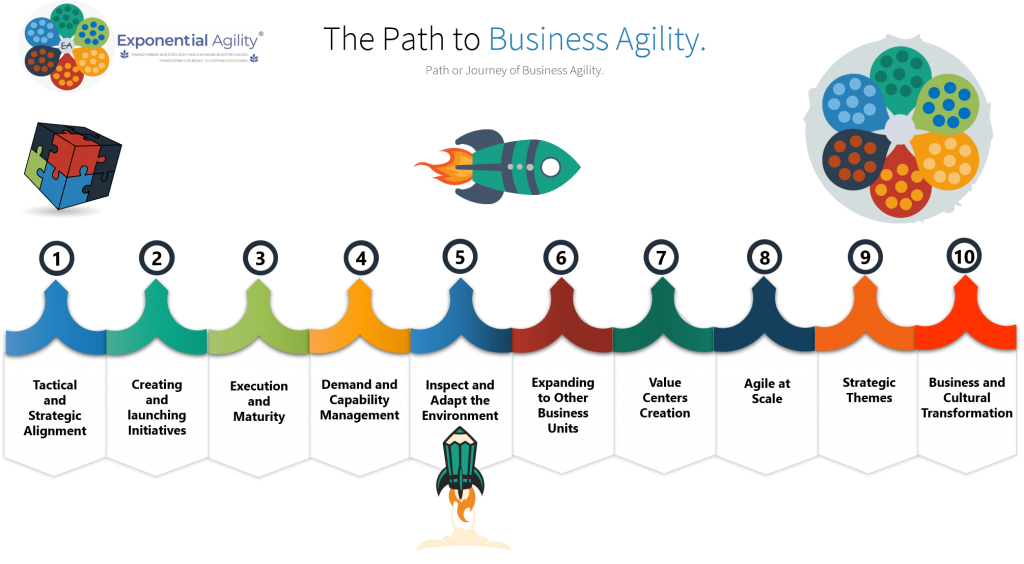Now, we will go to the eighth step of our path: the “Agile at Scale.”.
At this step, what we will obtain is a business, which is mature and sustained in agile to be able to scale, remember that what we scale is collaboration, and the other capabilities, so maturity of this is an objective. What we want is to keep productivity and investments as uniform as possible throughout our initial agile environment (more than 3 scrum teams initially), to achieve this, we need to scale a set of mature initiatives and their interaction between them.
There are different types of scaling, vertical scaling, focused on maximizing the value of a specific initiative until it becomes an exponential initiative or organization being an intra-entrepreneurship challenge where agile scaling-up can be a better framework to boost it.
Also, there are several frameworks that we are going to use as a mediums or tools, to maximize de value that the organization deliver to the clients. Scaling up is an adaptive change challenge, full of “wicked problems,” as design thinking describes, that are unique to each organization.
Remember that we must work deliberately and intentionally on creation, maturity, and stabilization of collaboration, since it is what we are going to scale, through sustained development and growth.
A scaling challenge is similar to a business escalation, for us it will be an intra-business escalation”, where we have peaks and valleys, which we must identify, to overcome the obstacles and achieve the future state, remember that we should execute agile with agile, with the objective that the capacities built are the base of the following ones, thus creating an environment of sustained collaboration.
At this point, it is very important that investment management is connected to the strategic themes of the organization, which will be our north star to follow, to contribute or directly achieve the business objectives.
That’s all for now, in the next capsule we will go to the nineth step of our path: “Portfolio and Strategic Themes”.




